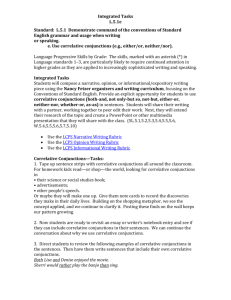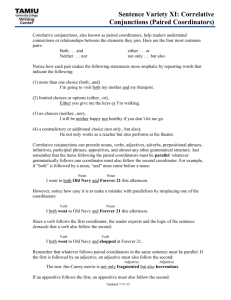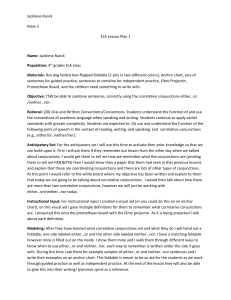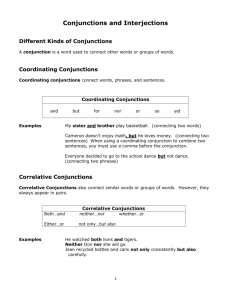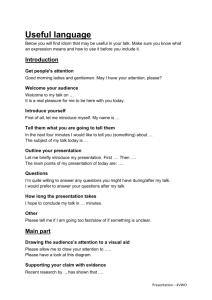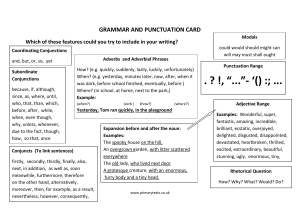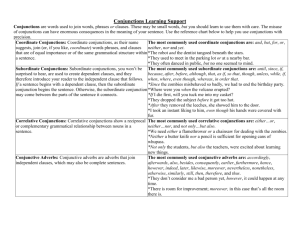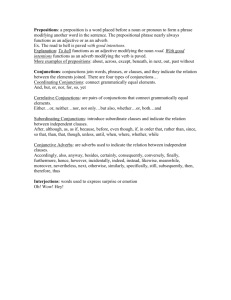Power point
advertisement
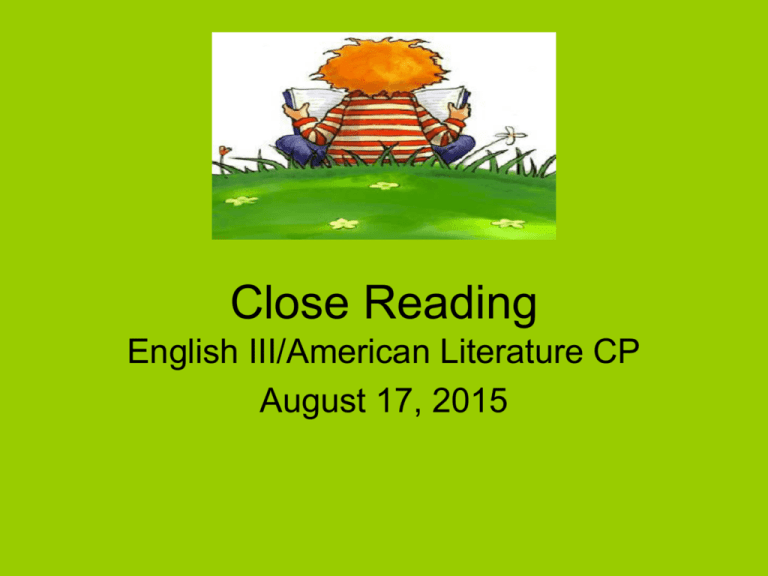
Close Reading English III/American Literature CP August 17, 2015 Today • Warm Up • MUG MONDAY (mechanics, usage, grammar) • Close Reading - “A Day at School in Kyrgyzstan” • Article of the Week HOMEWORK REMINDERS • MASK IS DUE TOMORROW • READ AOW “Brain Rules” Content Objective Students will identify and list the three levels of close reading. Language Objective Students will record information using Cornell Notes, and discuss a text in small group activities and whole class activities. Looking Ahead Warm U Term Tuesday Annotating Article of the Week Annotation CCSS: Speaking and Listening 1 Initiate and participate effectively in a range of collaborative discussions, building on others’ ideas and expressing their own clearly and persuasively. RI. 1. Cite strong and thorough textual evidence to support analysis of what the text says explicitly as well as inferences drawn from the text. RI.2. Determine a central idea of a text and analyze its development over the course of the text, including how it emerges and is shaped and refined by specific details; provide an objective summary of the text. RI.10. Read and comprehend nonfiction texts, with scaffolding as needed. Essential Questions: “Why is close reading important?” “How will the strategies used with close reading create ‘active’ reading?” & “How will active reading improve my ability to learn?” Agenda • Warm Up –M.U.G Monday – mechanics, usage, grammar • Close Reading – “A Day in School at Kyrgyzstan” • Article of the Week On Monday of each week, you will have a slide or two that involve mechanics, usage, or grammar. After 4 minutes, I will send a student, Instructional Assistant, Student Teacher or myself to stamp your notes. Types of Conjunctions • Correlative Conjunctions are not single words. They work in pairs. • Many pairs of correlative conjunctions exist. both….and whether….or not only….but also not….so much as either….or neither….nor Correlative Conjunctions Common Correlative Conjunctions and Examples: both, and Ex. Both maroon and gray accent nicely. either, or Ex. I like to wear either pants or capris. neither, nor Ex. Neither the shirt nor the jacket fit. not only, but (also) Ex. Not only one button fell off, but all of them. whether, or Ex. Whether or not you wear nice clothes, you have to wear clothes. not, so much as Ex. It was not that his clothes were flamboyant so much as they were florid. Examples of Correlative Conjunctions I saw both the Statue of Liberty and the Empire State Building. Examples of Correlative Conjunctions I don’t want neither pickles nor tomato on my hamburger. Examples of Correlative Conjunctions I don’t know whether to play baseball or to play basketball this year. Examples of Correlative Conjunctions After trading jobs with his wife, Mario promised to never say that a woman’s job is not as hard as a man’s job. Examples of Correlative Conjunctions Either the student or the teacher can answer the question. Examples of Correlative Conjunctions Not only do I play the flute, but I also play the clarinet. Practice both / and either / or neither / nor not only / but also whether / or as / as Fill in the blanks with appropriate correlative conjunctions. 1. Who decides ___________ a person will go to heaven _________ burn in hell? 2. The storm, ______ _______ furious ______ ________ destructive, forced evacuations of hundreds of people to storm shelters. 3. Neither the students nor the teacher really liked homework assignments. My Goal for all my students: “To gradually release responsibility to students – moving from an environment where the teacher models for students the strategies to one where students employ the strategies on their own when they read independently” (Pearson & Gallagher, 1983 as cited in Brown & Kappes, 2012). “Close reading can not be reserved for students who are already strong readers; it should be a vehicle through which all students grapple with advanced concepts and participate in engaging discussions regardless of their independent reading skills. It builds skill and motivation in the reader” (Pearson & Gallagher, 1983 as cited in Brown & Kappes, 2012) What is Close Reading? Discuss with your partner, what is going on, and what is the message the artist is sending the reader. C L O S E R E A D I N G Close Reading “Close reading of a text involves an investigation of a short piece of text with multiple readings.” Focuses on: Key Vocabulary Form or Structure Tone Imagery Rhetorical Devices Word Choice Syntax Levels of Meaning Good Reading Background • Most reading is skimmed • When you need to learn, reading requires close attention • Good reading is hard work • Good reading makes good writing Adapted from The Bedford Reader and The Little, Brown Reader Adaptation by Laura Hayes You know you have to read “between the lines”…. I want to persuade you to write between the lines. Unless you do, you are not likely to do the most efficient kind of reading. Mortimer J. Adler “How to Mark a Book” TIME TO READ The Three Levels of Reading 3 Levels of Reading Reading on the Line (Literal) Reading Between the Lines (Inferential) Reading Beyond the Lines (Thematic) First Level of Reading Literal READING ON THE LINE • Understanding & Remembering • Find meaning directly in the text • Mentally answer the questions “Who?” “What?” “When?” and “Where?” Second Level of Reading Inferential READING ________________ BETWEEN THE ________________ LINES • Applying & Analyzing • Readers interpret what is in the text • Key concerns are : -What does the passage represent, suggest, or personify? -What does a certain allusion or metaphor mean? - You are analyzing, interpreting, classifying, comparing, contrasting and finding patterns. Third Level of Reading Thematic READING BEYOND THE LINES ___________________ ___________________ • Evaluating & Creating • Readers move beyond the text to connect literature to their own experiences as well as with universal meaning. Reading Beyond the Lines (continued) • Ask: - “How does this text connect with my life?” - “How does it connect to life for all people?” - “How does it connect with my ideas about morality or values?” - What perceptions about life in general is the author communicating to me?” - “What do I think of these perceptions?” Three Levels of Reading 1 READING ON THE LINES 2 READING BETWEEN THE LINES 3 READING BEYOND THE LINES 1 Literal 2 Inferential 3 Evaluative/Thematic Three Levels of Reading 1 READING ON THE LINES 2 READING BETWEEN THE LINES 3 READING BEYOND THE LINES Remember and Understand Reading on the Line 1. Write the most significant word from the text. 2. Quote the entire sentence in which the word appears. Cite the source of the quotation in parentheses. 3.Write multiple dictionary definitions of the word (denotation). 4. Explain why the word is important to the meaning of the work by placing it in the context of the narrative. Applying and Analyzing *Draw & Explain Reading Between the Lines R 1. Referring to the text, draw FOUR images created from the text *Draw & Explain Reading On the Line *Draw & Explain 2. Write an explanation of the link between the four images from the text and the word you have written in the innermost circle. *Draw & Explain Evaluating And Creating Reading Beyond the Lines Reading Between the Lines Reading On the Lines Write TWO thematic statements drawn from the significant word you wrote in the innermost circle and the images you drew in the middle circle. These should be universal thematic statements. Challenge Time EXTRA CREDIT CHALLENGE Find someone who has gone to school in another country and goes to our school! • INTERVIEW THAT PERSON ABOUT THE DIFFERENCES BETWEEN THE TWO EXPERIENCES • Create a chart comparing and contrasting the two experiences. Let Us Practice • Preview the Text title – What do you think is the topic of this essay? • “A Day at School in Kyrgyzstan,” by Kathryn Hulick. FIRST READ: KEY IDEAS AND DETAILS • Read the story “A Day at School in Kyrgyzstan” • Focus on the key ideas and details in the text – What is the main idea – What are the key details the author includes. • Think-Pair-Share Second Read: Craft and Structure What is/are: • The question the author is trying to answer • The basic concept the author is portraying • The author’s purpose in writing the article • The author’s point of view • Assumptions the author is making • The implications of the author’s reasoning • The information the author choses to use, or to leave out Second Read: Craft and Structure • Let us look closely at paragraph #4. • Re-read this paragraph – What is the topic sentence? What is her claim? – What details does Hulick use to support her claim? – What word does Hulick use to describe her students that is an informal word? – What transition word does Hulick use to shift to her next idea near the end of the paragraph? • What is the function of this paragraph? • How does Hulick create a connection between the text and reader using this paragraph? THIRD READ: INTEGRATION OF KNOWLEDGE & IDEAS • Use a Venn Diagram • How are the students in Kyrgyzstan the same as you or different than you? U.S. Kyrgyzstan HOMEWORK • Read the article of the week Questions and Answers

